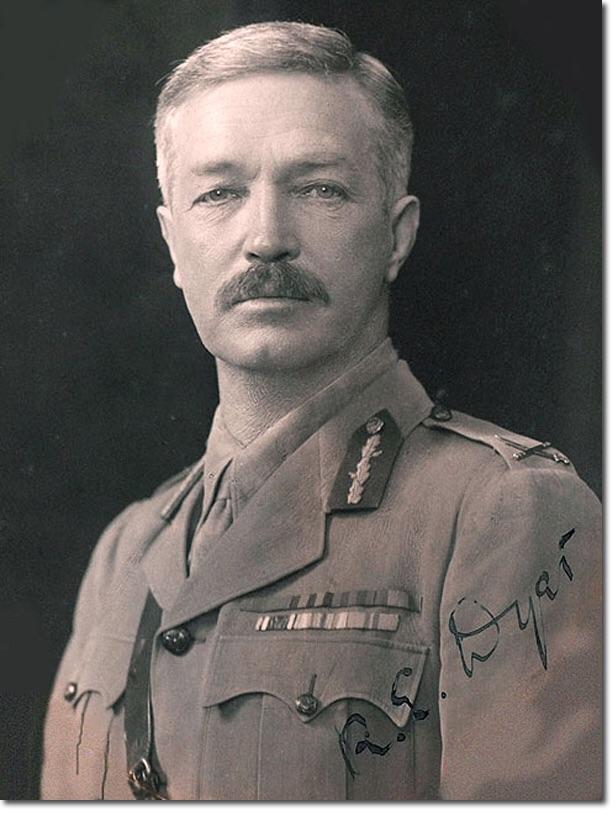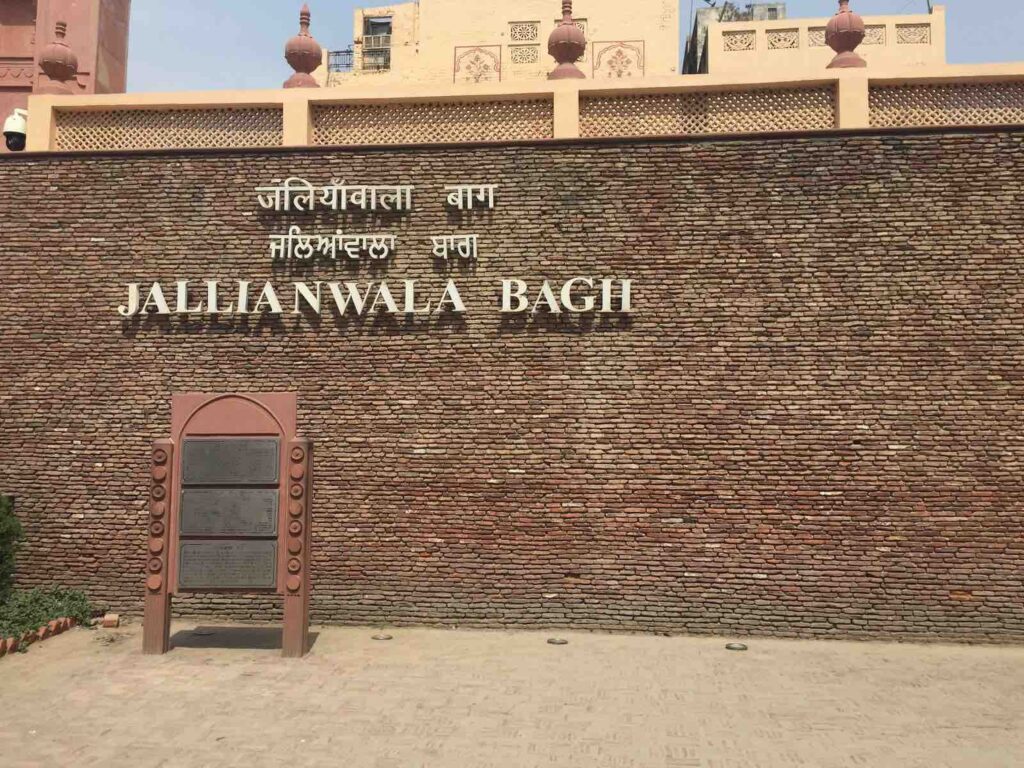Table of Contents
April 13, 2019, was a black day in Indian history. It marks the infamous Jallianwala Bagh massacre (also known as the Massacre of Amritsar) that took place in Amritsar, Punjab. The incident is probably the goriest event in the history of pre-independent India. The incident single-handedly depicted the nature of the British Raj and its tyranny in the country.
Defence of India Act of 1915
Jallianwala Bagh massacre was not something that happened without a reason. Some prior incidents laid the foundation for this gruesome incident.
Being part of the British colony, the Indian troops were heavily involved in World War 1. The British made sure that a large number of Indian soldiers acted as a shield for the British troops. Where men and resources were being exported to Europe, Africa, and the Middle East from the princely states, a wave of anti-colonial activities was rising in the states of Bengal and Punjab. The revolt was more intense than what the British comprehended.
Multiple anti-colonial revolts took place during World War 1 all over India. Some of the revolts were crushed, while some had an impact on the working of local administration. Considering the situation, the British came up with the Defence of India Act of 1915. Political and social liberties were curbed as part of the act. It was a criminal law that was enforced citing the revolutionary activities during and after World War 1. Under the act, the British officers had the power of preventive detention, arrest without trial, and enforcing the restriction on speech, writing, and free movement.
Rowlatt Act
The Anarchical and Revolutionary Crimes Act of 1919 or Rowlatt Act was one of the most controversial acts in British India. It was an extension of the Defence of India act of 1915. Under the act, the police could detain any person without any reason (though the lawmakers insisted that police could detain a person if he is involved in anti-colonial and revolutionary activities), a person could be arrested for two years on the suspicion of “terror activities”, and a person could be incarcerated without any trial.
Such an act was a direct attack on personal freedom as it was built on rules that were unlawful in normal circumstances. The act enabled the British officers to create fear among the common man. It was because of this act that Mahatma Gandhi came to the forefront of the Indian freedom struggle and initiated Satyagraha and non-violent protests against the act.
The Rowlatt Act was named after the president of the Rowlatt Committee, Sir Sidney Rowlatt.
In the aftermath of the act, senior leaders like Madan Mohan Malviya and Muhammad Ali Jinnah resigned from the legislative council. A nationwide hartal (strike) was observed on 6 April 1919 as an opposition to the act. Mahatma Gandhi initiated what was called as Non-cooperation movement as a mark of opposition.
The Rowlatt Act came into effect on 21 March 1919.
Events leading to the cause of the Jallianwala Bagh Massacre
The situation in Gujarat, Delhi, Bengal, and Punjab grew worse in the wake of the Rowlatt Act. There were riots across different cities and the British people were targeted by the mobs. Multiple instances of clashes between the British soldiers and the protesters were recorded.
Due to the violent protests, Mahatma Gandhi suspended Satyagraha that he initiated to oppose the Rowlatt Act.
Punjab was already burning. Services like rail and telegraph were hampered. On 10 April 1919, two senior leaders of the Indian National Congress, Dr. Satyapal and Saifuddin Kitchlew who were vocal against the act were arrested. This added fuel to the fire. The condition got out of control and the army had to be brought in to tackle the situation. Many protesters were killed by the army. On the other hand, there were instances of arson and killing of British people by the protesters.
The then Lieutenant-Governor of Punjab, Michael O’Dwyer was the center of events in Punjab. He made sure that any act of revolt was kept in check even if it involved killing people.
Another British officer who was the architect of the Jallianwala Bagh massacre was Brigadier-General Reginald Dyer. During the riots, on 11 April 1919, an English missionary – Marcella Sherwood was attacked by the mob. The incident made Dyer furious and acted as a precedent to the Jallianwala Bagh massacre. It is said that Dyer made the Indians crawl through the street (whoever used the street) where Marcella Sherwood was assaulted.

Courtesy – Reddit
Imposition of Martial Law
The situation in Punjab was getting out of hand for the British Raj. The riots were not restricted to sabotage and arson, some of the Europeans were also killed. The British decided to establish martial law in Punjab from 13 April 1919 onwards. As part of the law, much of the civilian liberties were restricted and gatherings of more than four people were prohibited. But there was a glitch. The information was not circulated to the mass as it should have been, thus most of the people were unaware of the imposition of martial law.
On 12 April 1919, some of the leaders who were part of the strike in Amritsar decided to hold a protest meeting the next day in Jallianwala Bagh. The agenda of the meeting was to discuss the detention of Kitchlew and Satyapal, the next steps in the protest of the Rowlatt Act, and how to tackle the British onslaught in Punjab. The important point to note was that the leaders of the protest were completely unaware of the martial law to be imposed.
Jallianwala Bagh Massacre
On 13 April 1919, General Dyer with his soldiers marched through the streets of Amritsar announcing the implementation of curfew. Many people were still left unaware and General Dyer did not care if the people were informed about the martial law or not.
13 April was the auspicious day of Baisakhi, an important festival for the Sikhs. After visiting the Golden Temple (Harmandir Sahib), most of the people started gathering in Jallianwala Bagh. Jallianwala Bagh was enclosed by high-scale walls and had only five narrow entrances.
Dyer got the information about the gathering in the afternoon post which he flew over Jallianwala Bagh to estimate the crowd gathered. He estimated about 5,000 people. As per other sources, the estimated crowd strength was around 10,000 or even more.
General Dyer’s Actions
An hour after the meeting began, Dyer entered Jallianwala Bagh with 90 armed soldiers and armored vehicles. He did nothing to disperse the crowd, at least not by peaceful means. Almost immediately, Dyer ordered his men to fire at the innocent and unarmed crowd. The situation went from bad to worse as people started panicking. There was no escape as only one (main) entrance was open and that was also guarded by Dyer and his troops. Few people jumped into the well (inside Jallianwala Bagh) to save themselves, but instead had to lose their lives. Over 100 bodies were recovered from the well after the shooting ended. Apart from this, many people also died because of the stampede.
After 1650 rounds, the shooting stopped as the ammunition exhausted. The damage had already been done. As per the Hunter Commission, 379 people were killed and three times the number were injured. According to Indian National Congress, over 1000 people were killed and over 1500 people were injured in the firing.

Courtesy – The Wandering Soul
Lieutenant-Governor of Punjab, Michael O’Dwyer approved General Dyer’s actions
The Aftermath
There was mass opposition against the incident. General Dyer had no regrets for his actions. He even stated that giving aid to the injured was not his duty.
Winston Churchill was vocal about the incident and condemned it.
Rabindranath Tagore too condemned the attack and renounced his knighthood.
Many Indians who were pro-British before the incident starting doubting their loyalty and became nationalists asking for independent India.
Hunter Commission and Assassination of Michael O’Dwyer
After the Jallianwala Bagh massacre, Hunter Commission was formed by the Government of India to investigate the incident. The commission took statements of various people involved in the incident including that of Dyer. Dyer was indifferent and had no remorse. He justified the firing and even stated that he continued firing for the whole time to disperse the crowd and instill fear. He had no regrets that the people died. General Dyer was later released from his duties in India in March 1920 after his actions were condemned by the Hunter Commission.
Some of the points concluded as part of the Hunter Commission were: –
- The information about the curfew and ban on gatherings was not fully circulated.
- Dyer did nothing to disperse the crowd peacefully.
- The continuous firing showed the brutality of the incident.
- There was no violence in Jallianwala Bagh before the meeting and so there was no reason for such an action.
- Killing innocent people was highly condemnable.
- Dyer did nothing to attend to the injured people and save them.
General Dyer died in 1927 due to prolonged illness.
Udham Singh, an Indian revolutionary killed Michael O’Dwyer on 13 March 1940 at Caxton Hall in London. O’Dwyer was the Lieutenant-Governor of Punjab at the time of the massacre and was considered as much guilty as General Dyer. Udham Singh was later hanged to death for his actions.
FAQs
The Jallianwala Bagh Massacre happened on 13 April, 1999
According to Indian National Congress, over 1000 people were killed and over 1500 people were injured in the firing.
Massacre of Amritsar
Lieutenant-Governor of Punjab, Michael O’Dwyer was considered to be the architect of the massacre because of his ruthless policies. General Reginald Dyer was however responsible for the actual massacre.
Udham Singh, an Indian revolutionary killed Michael O’Dwyer on 13 March 1940 at Caxton Hall in London.
CURATED & WRITTEN BY
AYUSH PANDYA
(AUTHOR – THE UNPRECEDENTED CULT)